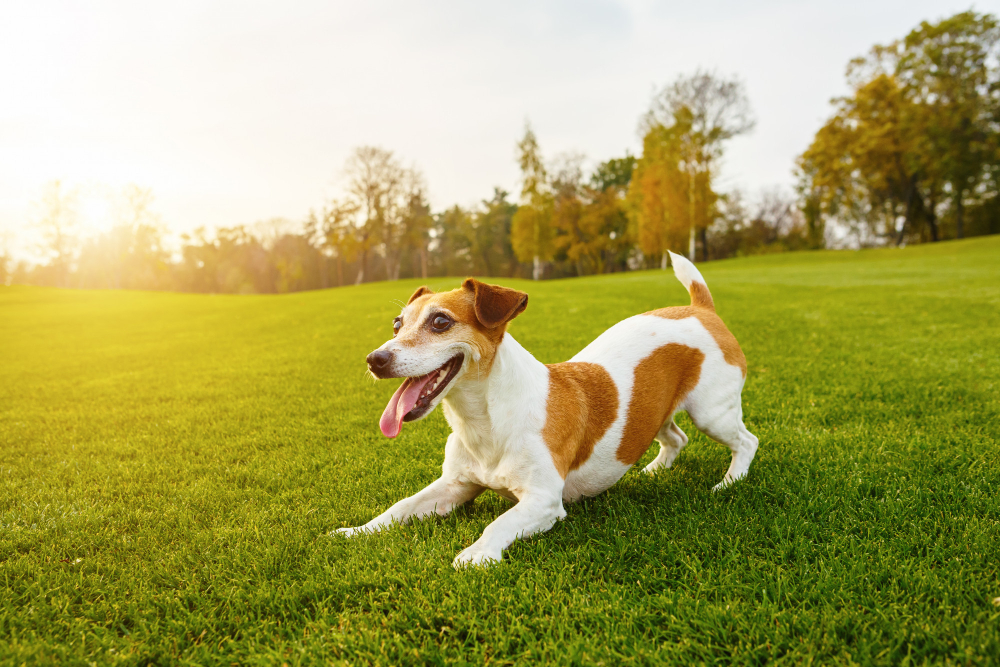How Healthy Lawns and Dogs Can Coexist Together

Healthy lawns are every homeowner's dream. A lush, green carpet to rest your feet on, a vibrant space for outdoor activities and events, and an area that boosts your home's curb appeal. However, as much as you'd like to have the perfect lawn, there's one obstacle that seems to be an issue for many homeowners, and that's their four-legged friends. Dogs love to run, dig, and play on the grass, presenting a significant challenge to lawn care. But can dogs and healthy lawns coexist? The answer is yes! In this blog post, we'll dive into some tips and tricks to maintain a healthy lawn despite your furry pal's shenanigans.
1. Choose the right grass seeds
When planning to grow a new lawn, it's important to research and select the right lawn seed for your specific needs. For homeowners with dogs, we recommend choosing a grass seed mix that is resistant to heavy foot traffic, durable, and can withstand fair wear and tear. Seed types such as tall fescue and perennial ryegrass are highly resilient and can handle a lot of stress from your pets. However, you'll need to ensure that you plant your seeds in the right season and use the appropriate fertilizers to help them grow and establish.
2. Keep your lawn well watered
Dogs tend to love playing in water, which can sometimes result in accidental lawn damage. However, you can mitigate some of the dog damage by ensuring that your lawn is getting adequate watering. A well-hydrated lawn can resist being uprooted and washed away. Make sure to use sprinklers or irrigators, preferably in the morning or early evening, to prevent water loss through evaporation.
3. Clean up after your pets
Dog poop is unsightly and can transfer harmful bacteria to your lawn, leading to damage and decay. Besides, urine patches can cause brown spots on your grass, leading to uneven growth and discoloration. To avoid such issues, make sure you regularly pick up after your dog and rinse the affected area with water. If the area has already turned brown, you can aerate and reseed the patch to rejuvenate growth.
4. Use pet-friendly lawn care products
The chemicals that you use to maintain a healthy lawn can have adverse effects on your pets. Commercial fertilizers, herbicides, and pesticides contain toxic chemicals that can harm your dog's health if ingested or inhaled. However, you can opt for organic or natural lawn care products that are safe for your pets. These include compost, manure, bone meal, and fish emulsion. Alternatively, you could hire a professional lawn care service that offers pet-friendly solutions.
5. Train your dog
Training your dog to stay away from certain parts of your lawn can go a long way in protecting your lawn. You can use positive reinforcement techniques to reward your dog for avoiding specific areas and discourage them from digging or playing too roughly. You can also assign them a designated area for playing and digging, such as a sandbox or playpen, where they can avoid causing damage to your lawn.
Conclusion
Dogs and healthy lawns can coexist harmoniously if you follow the tips and tricks outlined in this blog post. Growing a dog-friendly lawn requires some effort and prioritizing certain techniques to prevent damage. However, with the right choices, such as using resilient grass seed mixes and avoiding toxic chemicals, you can create a lovely outdoor space for both you and your furry friend to enjoy. If you are looking for professional help with your lawn care or if you're looking for sod installers in Orlando, FL, don't hesitate to contact From The Ground Up Landscaping for free estimates and exceptional lawn care services.